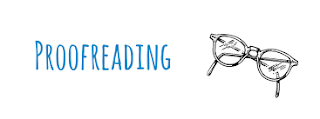It is well-known that professional proofreading services play a vital role today in helping authors make the most impact on their writing. Using a high-quality proofreading service is even a practice among the world’s most famous writers, including Stephen King and J. K. Rowling.
Therefore, an interesting question to ask, especially if you want to achieve professional-grade results but don’t want to recruit a proofreader, relates to the issue of what the proofreading process actually involves. We all know that professional proofreading services tend to focus on a document’s grammar, punctuation, and spelling, but what exactly are the tips and techniques used to do this effectively?
The purpose of this article is to provide an answer to the question of what are the most effective tips and techniques for proofreading that non-professionals (i.e., people without specialised training or experience in proofreading) can immediately start adopting these techniques to improve their work.
1. Print out your work
It is well-known that people’s reading habits differ substantially when they move from a digital copy of a document to a paper copy. Therefore, if you print out your work on a piece of paper instead of reading it on a screen, your eye may catch some of the errors on paper that you missed on screen.
2. Check for misused homonyms
A homonym is a word that has the same spelling or pronunciation as another word but a different meaning. A good example of a homonym is the word “complement”, which may be confused with the word “compliment”. Although these words have different spellings, they are pronounced the same and they carry a different meaning. (Look them up).
3. Avoid contractions in
academic writing
Using contractions (e.g., “you’re” rather than “you are”) has a significant effect on a writer’s tone. In academic writing, the use of contractions may undermine the credibility of your voice. For this reason, always avoid contractions in academic writing, and ensure that you carefully consider whether you should be using them in other types of writing.
4. Don’t overlook punctuation
Ensuring that all the words in your document are correct is great, but you should not overlook punctuation. In particular, pay special attention to capitalization, commas, semi-colons, and use of case (e.g., title case versus sentence case).
5. Read it backward
Starting from the end of your document and reading backward – word by word – is an effective way to break the pattern of our brain automatically correcting errors in sentences when we read them in the usual way (i.e., when we read forwards). For this reason, reading your work backward is one of the quickest and easiest ways to improve your results as a proofreader.
6. Get someone else to check
it
One of the most convenient ways to proofread your work is to pay for a professional proofreading service. The investment of an affordable sum of money to hire a good proofreader usually pays dividends in terms of the time you save, as well as the quality of your work overall.














